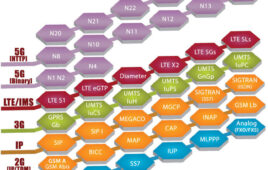With the recent boom in mobile messaging apps including WhatsApp and LINE, consumer brands that have relied on text messaging to communicate with audiences for more than 10 years, have to wonder if text messaging, specifically common short codes, are still as relevant to consumers as they once were.
A common short code is a five- or six-digit number used by a variety of organizations, ranging from marketers to government agencies and non-profits, to send a text message to communicate with customers via mobile devices. They are those short marketing numbers consumers can find in a multitude of places including pizza boxes, movie posters, soda cans – even in retail store aisles. Consumers can “Opt-In” with the promise of discounts, giveaways, or other offers for agreeing to receive future messages. It’s essentially an agreed upon communication between a brand and a consumer, allowing them to “Opt-Out” at any time.
For many American consumers, the first memorable introduction to Common Short Codes was the audience text voting available during the first season of Fox’s American Idol TV show. At the time, the concept of live audience voting from the convenience of the living room couch was both a technological marvel, as well as a level of audience interaction previously unseen in the television industry. Soon television networks and advertisers alike recognized the fourth wall – a term used to describe the imaginary barrier separating what we see on television from the real world – had finally been removed between viewer and media/advertising. Since then, consumers have widely embraced the format and used common short codes to donate money to disaster victims, sign up for news alerts, collect discounts from retailers, and follow the latest chatter from political candidates.
The user growth in mobile messaging apps is indeed impressive, with Business Insider recently reporting that mobile messaging apps now claim more active monthly users than social networks. Perhaps one key aspect contributing to the wide acceptance of mobile messaging apps is the fact that they are, in general, designed for younger audiences which have grown up in the app friendly digital era.
It’s understandable that when acknowledging the large mobile messaging app user base and recognizing it as a still fairly intact advertising resource that brands would consider abandoning common short codes all together in favor of the newest mobile messaging app opportunities.
But common short codes remain relevant despite this growth.
Common short codes are more relevant today than ever before
Brands, which calculate and forecast marketing Return of Investment (ROI) down to the penny, have continued to support the common short code format – and for good reason. The key to the longevity of the common short code format is its reliability for brands and consumers alike. Unlike emails that are filed into “Junk” folders or important voice calls that seem to “drop” during the most inopportune times, common short codes messaging lands on target nearly 100 percent of the time [Dynmark]. Whether notifying airline travellers of a flight delay or making dinner reservations at a local restaurant, the high delivery rate associated with common short codes is extremely valuable to brands and consumers alike.
Another reason common short codes continue to flourish is that while mobile messaging apps can be casually installed and deleted, often creating an unstable user base, cell phones numbers rarely change. With convenient number portability options between phone carriers, common short codes can establish relationships between consumers and brands that last many years. Common short codes are also ubiquitous across wireless carriers; Snapchat messages go only to Snapchat users, but common short codes can go to Sprint subscribers as effectively as they go to Verizon subscribers.
Legally, the most valuable feature common short codes bring to brands is the ability for users to easily “Opt-In” and “Opt-Out” at their sole discretion. This unusual level of consumer control over the amount and frequency of advertising content users receive is unique to common short codes. Television, radio, email, and other media platforms in some instances are not always required to respect and adhere to consumer requests as rigorously as common short code administrators do. Ironically, the reason for this consideration for consumer advertising preference has more to do with the common short codes delivery method than with the actual messaging content or sender intention. In fact, because messages sent via common short codes are delivered via telephone lines, they are overseen by the Cellular Telecommunications Industry Association (CTIA) which helps ensure that common short codes messaging adheres to the same strict Telephone Consumer Protection Act (TCPA) guidelines developed to protect consumers against telephone spam.
By contrast, web based mobile messaging apps are sent over the worldwide web. As such, they do not fall under TCPA scrutiny. While that provides less restrictions for marketers, it can lead to increased consumer abuse and user annoyance.
There is no denying that beyond the novelty, mobile messaging apps do bring inherent attributes such as advanced video chatting capabilities and endless photo sharing features. Nonetheless, common short codes bring a reliability and legal-approved method of engagement that encourages their continued use by both consumers and brands alike.
Mike Pellegrino oversees global business development for the Common Short Codes business for iconectiv, a partner of the global communications industry.




